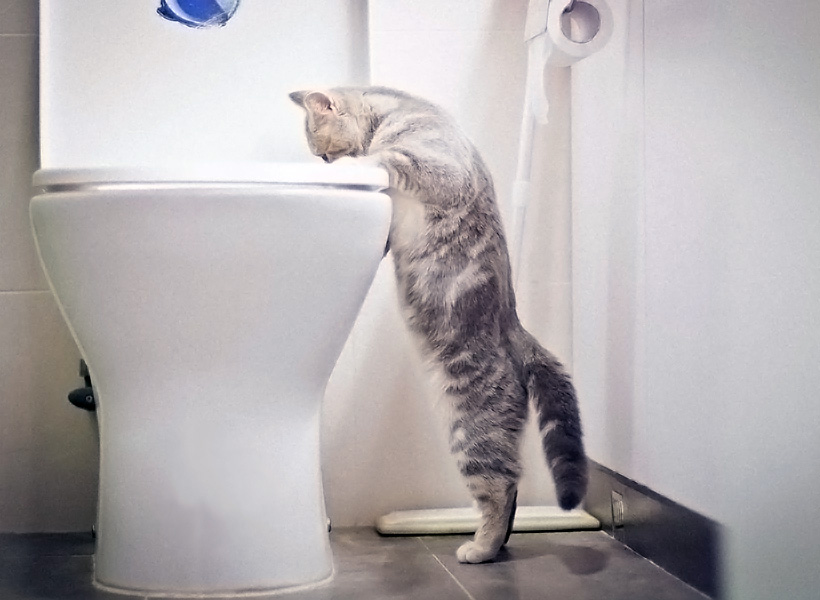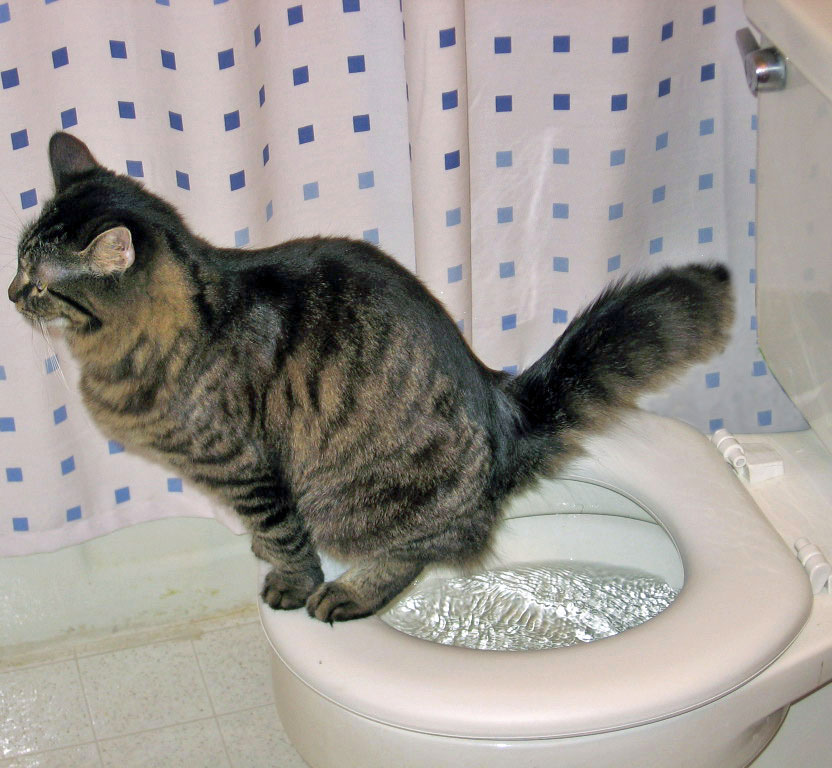Vital Considerations Regarding Flushing Animal Waste Down the Toilet
Vital Considerations Regarding Flushing Animal Waste Down the Toilet
Blog Article
We have stumbled upon this article on Why you should never flush dog poop down the toilet directly below on the internet and figured it made perfect sense to relate it with you in this article.

When it involves disposing of waste, particularly animal waste, many individuals commonly turn to the convenient alternative of flushing it down the bathroom. However, this apparently simple option can have major repercussions for the setting and public health. In this write-up, we'll explore why flushing animal waste down the toilet is a negative concept and supply different approaches for correct disposal.
Introduction
Correct garbage disposal is important for preserving environmental sustainability and public health. While it may seem harmless to flush animal waste down the bathroom, it can bring about various problems, both for the setting and human well-being.
Risks of flushing pet waste
Ecological impact
Flushing pet waste introduces hazardous bacteria and virus right into rivers, which can negatively influence water ecosystems. These microorganisms can infect water sources and injury aquatic life, disrupting fragile ecosystems.
Public health problems
Pet waste includes damaging microorganisms such as E. coli and Salmonella, which can pose major health and wellness threats to people. Purging pet waste down the commode can infect water products, bring about the spread of illness and infections.
Alternatives to flushing
As opposed to flushing animal waste down the toilet, there are a number of alternative disposal techniques that are extra eco-friendly and sanitary.
Composting
Composting pet waste is an environment-friendly means to dispose of it. By composting, organic matter is broken down right into nutrient-rich soil, which can be utilized to feed gardens and plants.
Land fill disposal
Dealing with animal waste in a land fill is an additional option. While not as eco-friendly as composting, it is a more secure option to flushing, as it stops the contamination of water sources.
Pet waste disposal systems
There are customized pet garbage disposal systems readily available that securely and hygienically deal with pet waste. These systems commonly use enzymes to break down waste and eliminate odors.
Steps to appropriate pet waste disposal
To make certain proper disposal of pet waste, comply with these steps:
Scooping and nabbing waste
Routinely scoop and bag animal waste utilizing naturally degradable bags. This avoids waste from infecting the setting.
Making use of marked waste containers
Dispose of bagged pet waste in designated waste containers, such as compost containers or garbage dump bins. Stay clear of flushing it down the bathroom at all expenses.
Cleaning up can and pet locations on a regular basis
Routinely clean litter boxes and family pet locations to prevent the build-up of waste and bacteria. Use pet-safe cleaning products to maintain hygiene.
Advantages of appropriate disposal approaches
Embracing appropriate disposal techniques for animal waste offers several advantages:
Decreased environmental pollution
Proper disposal approaches lower the danger of environmental pollution, protecting rivers and ecosystems from contamination
Decreased danger of water contamination.
By preventing flushing pet waste down the bathroom, the danger of water contamination is significantly decreased, guarding public health.
Boosted hygiene and hygiene
Proper disposal approaches advertise much better sanitation and hygiene, producing a more secure environment for both human beings and animals.
Final thought
Finally, flushing animal waste down the bathroom is hazardous to the atmosphere and public health. By adopting alternate disposal approaches and following proper waste administration methods, we can decrease the unfavorable impact of pet waste and contribute to a cleaner, healthier planet.
Why You Should Never Flush Cat Poop Down the Toilet
A rose by any other name might smell as sweet, but not all poop is created equal. Toilets, and our sewage systems, are designed for human excrement, not animal waste. It might seem like it couldn’t hurt to toss cat feces into the loo, but it’s not a good idea to flush cat poop in the toilet.
First and foremost, assuming your cat uses a litter box, any waste is going to have litter on it. And even the smallest amount of litter can wreak havoc on plumbing.
Over time, small amounts build up, filling up your septic system. Most litter sold today is clumping; it is made from a type of clay that hardens when it gets wet. Ever tried to scrape old clumps from the bottom of a litter box? You know just how cement-hard it can get!
Now imagine just a small clump of that stuck in your pipes. A simple de-clogger like Drano isn’t going to cut it. And that means it’s going to cost you big time to fix it.
For an amusing, graphic tale of what happens when you flush too much litter down the toilet all at once, take a few minutes to read Gene Weingarten’s 2017 Washington Post column “So that’s what happens when you flush cat litter down the toilet.”
Parasitic Contamination
Believe it or not, your healthy kitty may be harboring a nasty parasite. Only cats excrete Toxoplasma in their feces. Yet it rarely causes serious health issues in the cats that are infected. Most people will be fine too if infected. Only pregnant women and people with compromised immune systems are at risk. (If you’ve ever heard how women who are expecting are excused from litter cleaning duty, Toxoplasma is why.)
But other animals may have a problem if infected with the parasite. And human water treatment systems aren’t designed to handle it. As a result, the systems don’t remove the parasite before discharging wastewater into local waterways. Fish, shellfish, and other marine life — otters in particular — are susceptible to toxoplasma. If exposed, most will end up with brain damage and many will die.
Depending on the species of fish, they may end up on someone’s fish hook and, ultimately on someone’s dinner plate. If that someone has a chronic illness, they’re at risk.
Skip the Toilet Training
We know there are folks out there who like to toilet train their cats. And we give them props, it takes a lot of work. But thanks to the toxoplasma, it’s not a good idea.
Leave the toilet to the humans, and accept your future litter cleaning duty.

Routinely clean litter boxes and family pet locations to prevent the build-up of waste and bacteria. Use pet-safe cleaning products to maintain hygiene.
Advantages of appropriate disposal approaches
Embracing appropriate disposal techniques for animal waste offers several advantages:
Decreased environmental pollution
Proper disposal approaches lower the danger of environmental pollution, protecting rivers and ecosystems from contamination
Decreased danger of water contamination.
By preventing flushing pet waste down the bathroom, the danger of water contamination is significantly decreased, guarding public health.
Boosted hygiene and hygiene
Proper disposal approaches advertise much better sanitation and hygiene, producing a more secure environment for both human beings and animals.
Final thought
Finally, flushing animal waste down the bathroom is hazardous to the atmosphere and public health. By adopting alternate disposal approaches and following proper waste administration methods, we can decrease the unfavorable impact of pet waste and contribute to a cleaner, healthier planet.
Why You Should Never Flush Cat Poop Down the Toilet
A rose by any other name might smell as sweet, but not all poop is created equal. Toilets, and our sewage systems, are designed for human excrement, not animal waste. It might seem like it couldn’t hurt to toss cat feces into the loo, but it’s not a good idea to flush cat poop in the toilet.
First and foremost, assuming your cat uses a litter box, any waste is going to have litter on it. And even the smallest amount of litter can wreak havoc on plumbing.
Over time, small amounts build up, filling up your septic system. Most litter sold today is clumping; it is made from a type of clay that hardens when it gets wet. Ever tried to scrape old clumps from the bottom of a litter box? You know just how cement-hard it can get!
Now imagine just a small clump of that stuck in your pipes. A simple de-clogger like Drano isn’t going to cut it. And that means it’s going to cost you big time to fix it.
For an amusing, graphic tale of what happens when you flush too much litter down the toilet all at once, take a few minutes to read Gene Weingarten’s 2017 Washington Post column “So that’s what happens when you flush cat litter down the toilet.”
Parasitic Contamination
Believe it or not, your healthy kitty may be harboring a nasty parasite. Only cats excrete Toxoplasma in their feces. Yet it rarely causes serious health issues in the cats that are infected. Most people will be fine too if infected. Only pregnant women and people with compromised immune systems are at risk. (If you’ve ever heard how women who are expecting are excused from litter cleaning duty, Toxoplasma is why.)
But other animals may have a problem if infected with the parasite. And human water treatment systems aren’t designed to handle it. As a result, the systems don’t remove the parasite before discharging wastewater into local waterways. Fish, shellfish, and other marine life — otters in particular — are susceptible to toxoplasma. If exposed, most will end up with brain damage and many will die.
Depending on the species of fish, they may end up on someone’s fish hook and, ultimately on someone’s dinner plate. If that someone has a chronic illness, they’re at risk.
Skip the Toilet Training
We know there are folks out there who like to toilet train their cats. And we give them props, it takes a lot of work. But thanks to the toxoplasma, it’s not a good idea.
Leave the toilet to the humans, and accept your future litter cleaning duty.

Do you enjoy more info about Can You Flush Dog and Cat Poo Down the Toilet?? Post a review down the page. We would be happy to listen to your feelings about this post. Hoping to see you back again in the future. Sharing is good. Helping others is fun. Thanks so much for taking the time to read it.
Website Report this page